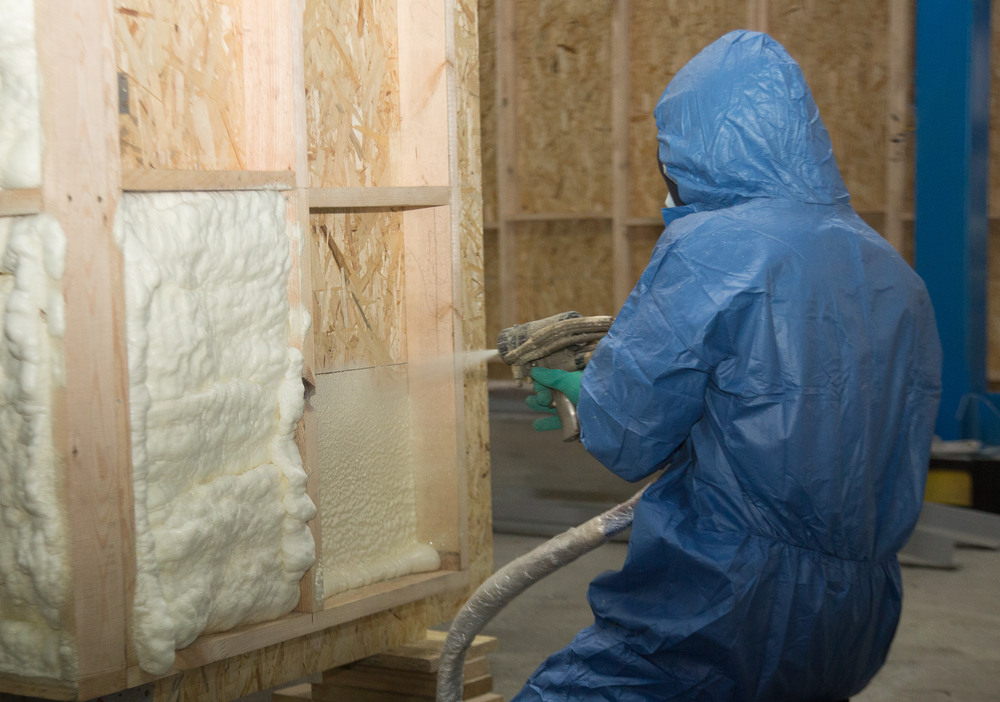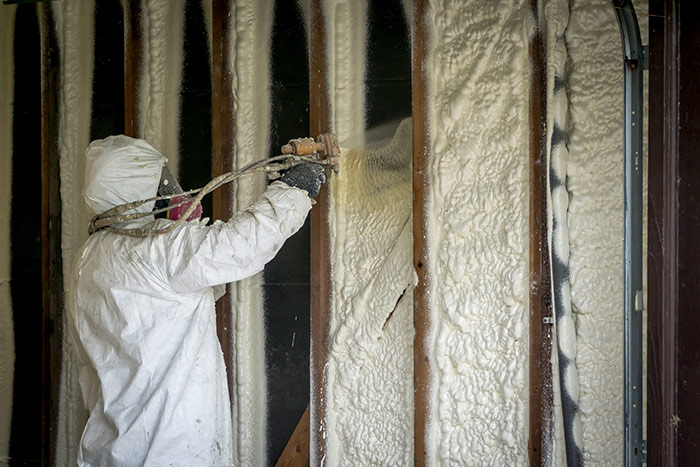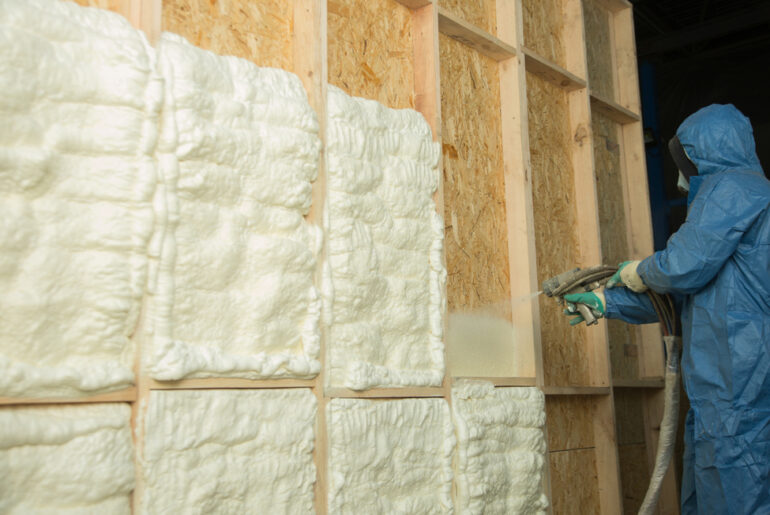Before proceeding to get spray foam insulation for your home, it is important to be aware of the various options you have. This way, you get the one that fits right into what you need or the space you need to occupy or insulate in your new or renovated building.
Different types of spray foam insulation perform similar yet contrasting functions when installed. The common types of spray foam include medium-density, antipest, open-cell, and closed-cell.
How can you identify the best spray foam type for spaces in your home? What type is the best for your home need? And can these different types be used interchangeably?
You’ll find a detailed answer to all your questions in this article. So, continue reading to discover these various types of spray foam insulation that help control the temperature of homes.
Open Cell Spray Foam
This spray foam type consists of cells that aren’t fully encapsulated. Open Cell spray foam is intentionally left open, making them softer and more amenable. It has an R-Value of about 3.5 per inch, much less than closed-cell foams.
Consequently, open-cell insulation’s capabilities are limited during extreme temperatures. When sprayed, open-cell foam expands to three inches of thickness. A single-layer application will suffice for most typical walls in your home.
Closed Cell Spray Foam
As the name implies, closed-cell spray foam consists of closed cells. During their manufacturing process, this spray foam type is pressed together so tight that nothing can come between the foam – neither air nor moisture. Hence, people refer to them as more rigid and stable compared to the other type – open cell. Also, closed-cell foam is thicker compared to the other type.
It has a higher R-Value of about 6-7 per inch. This makes this spray foam type better at keeping the heat in or out of your building. An example of a manufacturer that produces closed-cell formula spray foam is Tiger Foam’s E84. When sprayed, closed-cell spray foam tends to extend to about an inch of thickness, and every inch offers an R-value of 7.
Low-Density Spray Foam
This spray foam insulation serves as continuous insulation to other spray foam types. Also, it performs the function of an air-sealing barrier when used in any space in the home. Low-density, also known as half-pound foam, weighs 0.5 lbs. per cubic foot and is pretty flexible compared to the rigidity of high-density spray foam.
This spray foam is also installed as a low or high-pressure two-component polyurethane spray foam. Although this spray foam is famous for performing its duty as an air barrier quite well, the same cannot be said for moisture. Low-density spray foam is prone to vapor and moisture, so it is best to install them in places where little or no moisture can reach it; else, it absorbs it all and doesn’t perform its function anymore.
Due to the low-intensity spray foam’s characteristics, it is preferably used to fill cavities in walls during construction or the building process. It is important to note that low-density foam remains soft and flexible even after installation.
Hence, it provides heat insulation and seals airflow that may want to escape through seams, cracks, and joints by filling the cavities. Another benefit of this spray foam type is that it absorbs sound, acting soundproof. It is perfect for installing them in unvented and vented attics, walls, ducts, ceilings, and crawl spaces.
Medium-Density Spray Foam
Medium-density spray foam insulation type weighs around 2 lbs. and has a high R-value of 5.7 per inch. Medium-density spray foam can be used as a two-component form for high and low pressures depending on where you prefer to install it. For instance, medium-density spray foam is perfect for high-pressure projects like big renovations and full-building constructions. It can also be used to insulate small or medium-sized spaces with low pressure, like piping or ductwork.
It provides high-tensile strength, which helps your home withstand substantial stress without breaking. Also, it offers a high bond strength which helps stick well to the surface applied, so you don’t have to worry about randomly separating from the surface installed. Furthermore, this spray foam insulation offers less vapor infiltration. It means that the exposure of this spray foam to moisture of any kind does not affect its insulation properties.
Due to its high R-value, this insulator type can resist the conductive flow of heat. Therefore, it is perfect for tight installations that need the highest R-value possible when put in the least amount of space. For this reason, medium-density spray foam is often referred to as continuous insulation for crawl spaces and other interior spaces.
High-Density Spray Foam
As the name implies, high-density spray foam has a denser structure than any other type of spray foam you will find on the market. Most builders and homeowners turn to high-density spray foam when they need high values and strength insulators. It is the perfect choice for controlling the temperature on the roof and other exterior places of the home. Due to its seamless and rigid nature, this is a major benefit.
Another reason high-density spray is the most preferred choice of all spray foam insulation types is that it helps to lessen energy costs significantly for the duration of any roof you install, even with its thermal resistance properties. Another advantage of using this spray foam type is that it helps protect your structure against air and water infiltration.
Furthermore, since any spray foam insulation forms a bond when installed in whatever space you need to control your home temperature, the bond also helps increase your home’s resistance to wind uplift. In turn, less damage is caused or experienced during high winds or other climatic weather of related features.
An example of this spray foam insulation type HandiFoam. It provides an amazing R-value of 6.5 per inch and uses HFO blowing agents, which helps to lessen the GWP (Global Warming Potential) of using the product in your home.
Antipest Spray Foam
Certain spray foam insulation prevents the infestation of pests like insects and other troubling little animals that like to hide in the dark corners of the home.
Open cell spray foam: This forms the perfect fit for tight, odd-shaped, and narrow spaces like attics and basements. It is so because this type of spray foam is softer and can be easily manipulated to fill whatever type of space you wish it to, thereby preventing insects and pests from infiltrating these places.
Closed cell spray foam: This is the opposite of the aforementioned spray foam type, but it performs a similar function in keeping insects and pests at bay. It has a hard texture than the open-cell spray foam due to its lack of moisture. Therefore, you can use it to block the gaps around your windows, doors, and other necessary openings in the home to prevent these annoying creatures from coming into your home.





